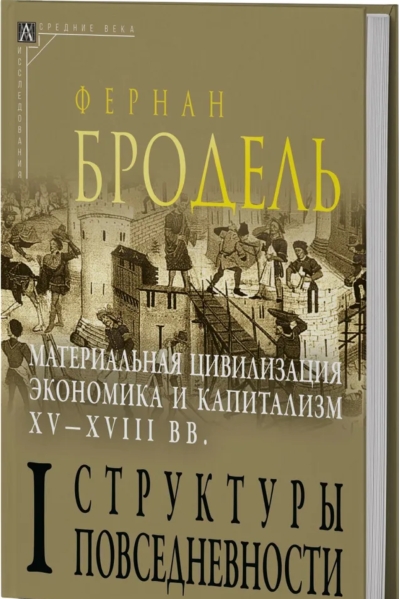Material Civilization, Economy, and Capitalism, 15th–18th Centuries. In 3 Volumes. Volume 1: Structures of Everyday Life: The Possible and the Impossible. Volume 2: Games of Exchange. Volume 3: The Time of the World.
149.99 €
The only thing available 2
Fernand Braudel's seminal three-volume work is a comprehensive study of human economic life during the pivotal era of the emergence of capitalist relations.
The first volume, entitled "Structures of Everyday Life: The Possible and the Impossible," is devoted to various spheres of material life. The work is replete with a wealth of material material, covering various aspects of everyday life in the late Middle Ages and early modern period—both in Europe and far beyond. This book will be of interest not only to specialists in history and economics, but also to a wide range of readers.
"Games of Exchange" explores the complex world of economic communication. Fernand Braudel explores the various levels of commercial activity—peddler labor, long-distance trade, international exchanges, and credit institutions. He traces how their complex interactions influenced society and social hierarchy. One of Braudel's main objectives is to compare the market economy and capitalism, identifying their points of contact, their degree of independence, and the nature of their rivalries.
In the final volume of his work, Fernand Braudel presents global economic history, "organizing" it in time and space. It is presented as the alternating dominance of several world-economies, united not only by a single center but also by common temporal rhythms. Examining the causes of the rise and decline of these worlds, the problems of national market formation, and the regional characteristics of the Industrial Revolution, the author chronologically verifies his main hypotheses, outlined in the previous volumes.
The first volume, entitled "Structures of Everyday Life: The Possible and the Impossible," is devoted to various spheres of material life. The work is replete with a wealth of material material, covering various aspects of everyday life in the late Middle Ages and early modern period—both in Europe and far beyond. This book will be of interest not only to specialists in history and economics, but also to a wide range of readers.
"Games of Exchange" explores the complex world of economic communication. Fernand Braudel explores the various levels of commercial activity—peddler labor, long-distance trade, international exchanges, and credit institutions. He traces how their complex interactions influenced society and social hierarchy. One of Braudel's main objectives is to compare the market economy and capitalism, identifying their points of contact, their degree of independence, and the nature of their rivalries.
In the final volume of his work, Fernand Braudel presents global economic history, "organizing" it in time and space. It is presented as the alternating dominance of several world-economies, united not only by a single center but also by common temporal rhythms. Examining the causes of the rise and decline of these worlds, the problems of national market formation, and the regional characteristics of the Industrial Revolution, the author chronologically verifies his main hypotheses, outlined in the previous volumes.
See also:
- All books by the publisher
- All books by the author
- All books in the series Epochs. Middle Ages. Research





















